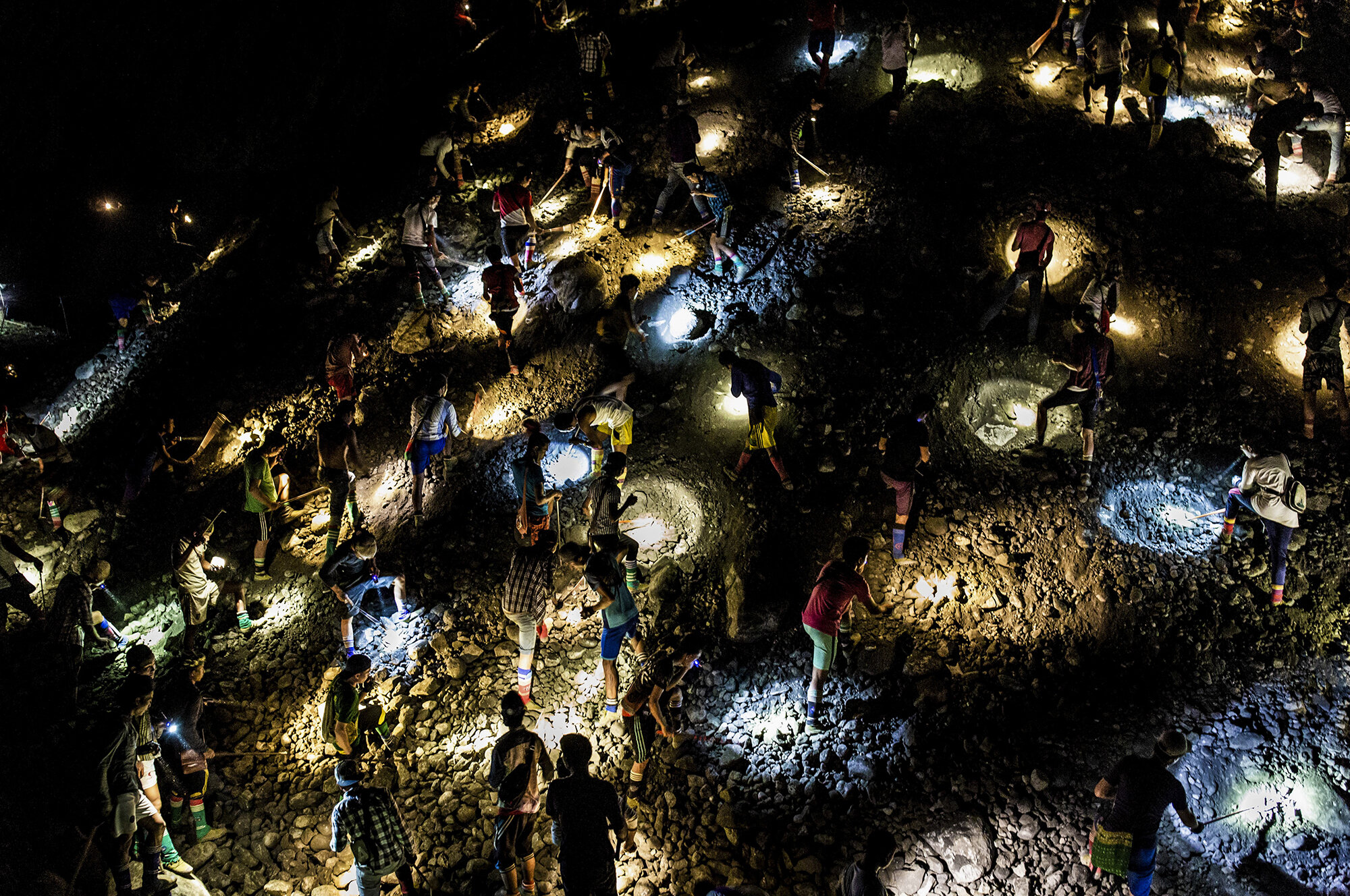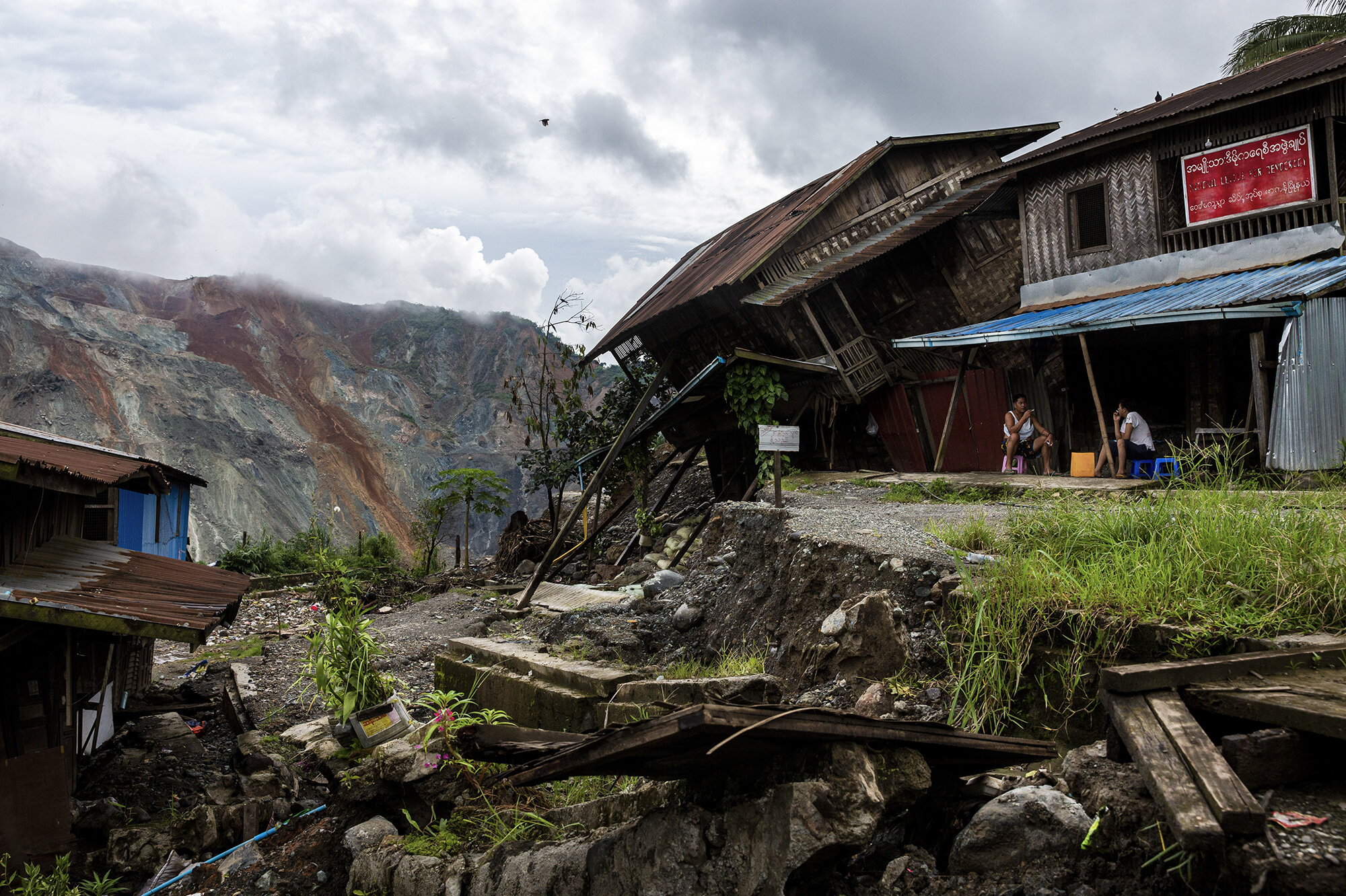In Search of Jade: Environmental Degradation in Myanmar

In Search of Jade: Environmental Degradation in Myanmar
With national news bringing to light the reality of climate migration in America for the past few weeks, my mind immediately drifted to looking at impacts of environmental shifts, or in the words of NPR’s title, the impacts of “environmental tragedies,” in Southeast Asia.
Emily Fishbein and Aunt Myat Lamung’s article, “How A Beloved Gemstone Became A Symbol Of Environmental Tragedy In Myanmar” lays out the initial context and consequential aftermath (or lack therof) that came out of a mine-generated landslide taking the lives of nearly 200 individuals in Hpakanat township, located in the nortthernmost Kachin State of Myanmar. The article explains that within the past 20 years, intensive mining has made Myanmar the leading exporter in Jade. One former jade miner recalls that in 1989, Hpakanat was a place where freshwater oysters could be harvested. However, as demand from China was apparent, these freshwater river sources became stained with mining sediment and trailings located closer than the minimum 500 feet government mandate seeping into water sources, and as of recent culminating in large and dangerous landslides. While this particular landslide happened in July, the article does a good job in explaining that because of this incident’s magnitude that many underlying issues surrounding mining, livelihood of local residents, and lack of action were given more attention.

Freelance miners searching for jade.
The context information this article included highlighted a lot of topics discussed in class this far. One quote from the former miner highlights the acknowledgement and impact the landscape of Myanmar, which falls under Scott’s Zomia region: “Hpakant’s environment is destroyed. Mountains became valleys and valleys became mountains. Rivers, streams and creeks are upside-down, shifted into chaos.” While the natural landscape of this region has been acknowledged as a factor in cultural, ethnic and social dynamics in class, this quote reflects the anthropogenic impact of the landscape. In a way, it highlights the recipricol relationship between not only landscape and humans, but also ‘rural’ and ‘governing’ bodies. The thumbnail really visualizes the stark contrast in what is a result of mining (including the color of the water), and what would be seen as “natural” landscape. Then, another shot below highlights the impact on local residents. If one asks the question “How did it get here?” or “Who’s allowing this to happen?” complexities and layering we have underscored in class appear from economy, globalization and NGO pressure to local government, military power and local freelance miners.

Impact of July’s landslide. All images by Hkun Lat.
The article does not go into depth about the ecological impacts, but it does touch on the factors that have prevented timely action towards labor rights and environmental protection. For example, statements made from Kachin National Social and Development Foundation following the July landslide, and even the national government committed to removing sediment in the Uru stream; However, the jade mining industry has many ties to the military, and the evidence linking these two continue to perpetuate the Western headlines of Myanmar being questioned as “biggest natural resources heist in modern history.” More layers are added on who is to blame, and who is responsible for protecting those disproportionately affected. Not only does this article talk about the relationship Hpakant residence have to the land, but also the integration and impact of adhering to globalization (which to a certain extent is a manifestation of modernity?).
I found this story initially on NPR, but did try to find some more Southeast Asian news sources that could offer some more insight. Something interesting that did not make it to initial article was the fact that 77 households that were advised to relocate due to landslide risk after July event did not, reportedly due to cost.
Comments
Elizabeth,
I learned of similar stories related to jade mining in Myanmar from my student Elliott Prasse-Freeman’s dissertation. It is such a post-apocalyptic drama–it’s almost unfathomable. And this is what the world is cheering for wen they speak naively about Myanmar’s transition. “Transition to what?”, Katherine Verdery once asked in her famous work on post-socialist Romania–in many ways it’s a transition to feudalism wrapped in the language of a return to the rights regime.
Pages